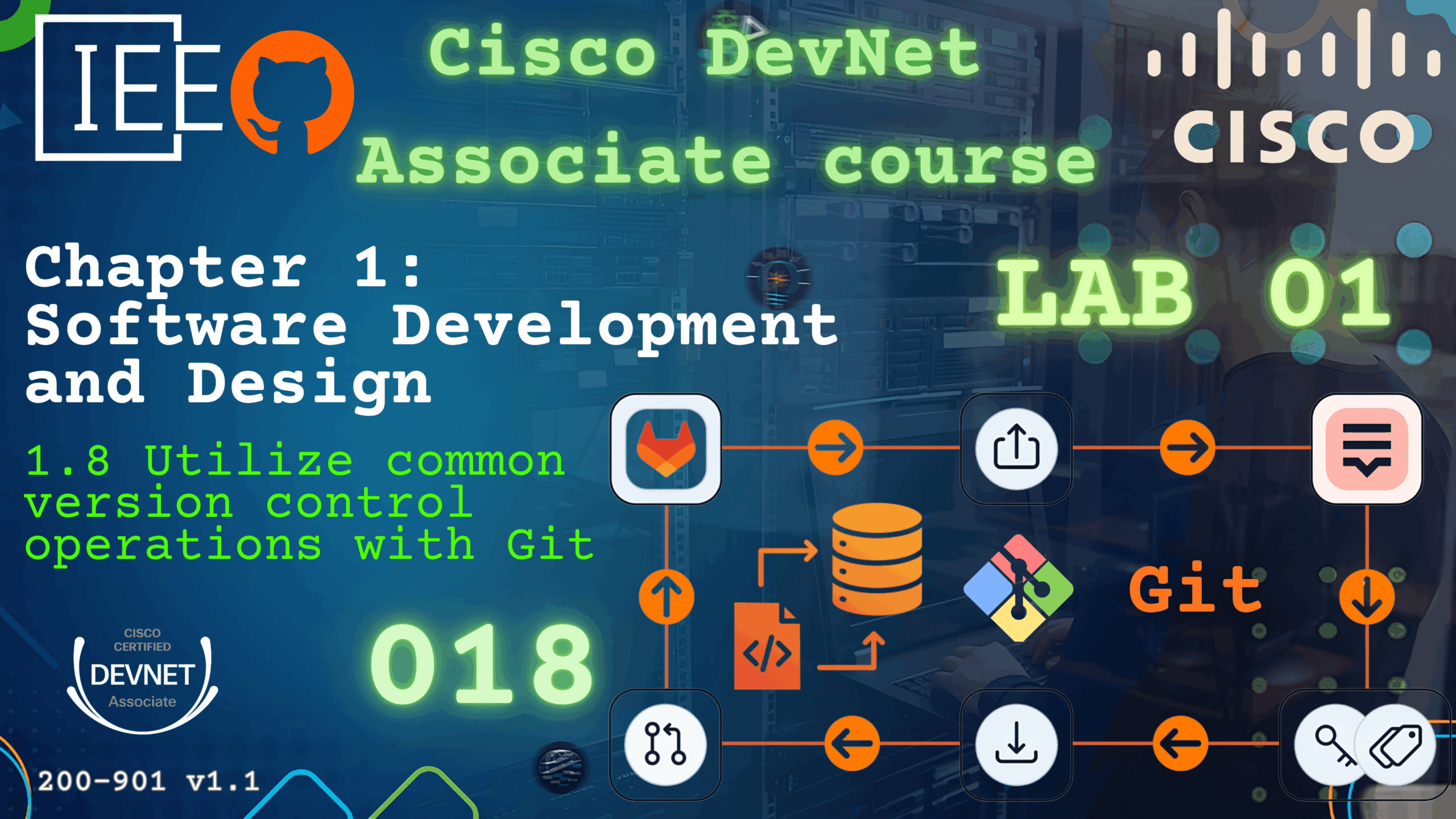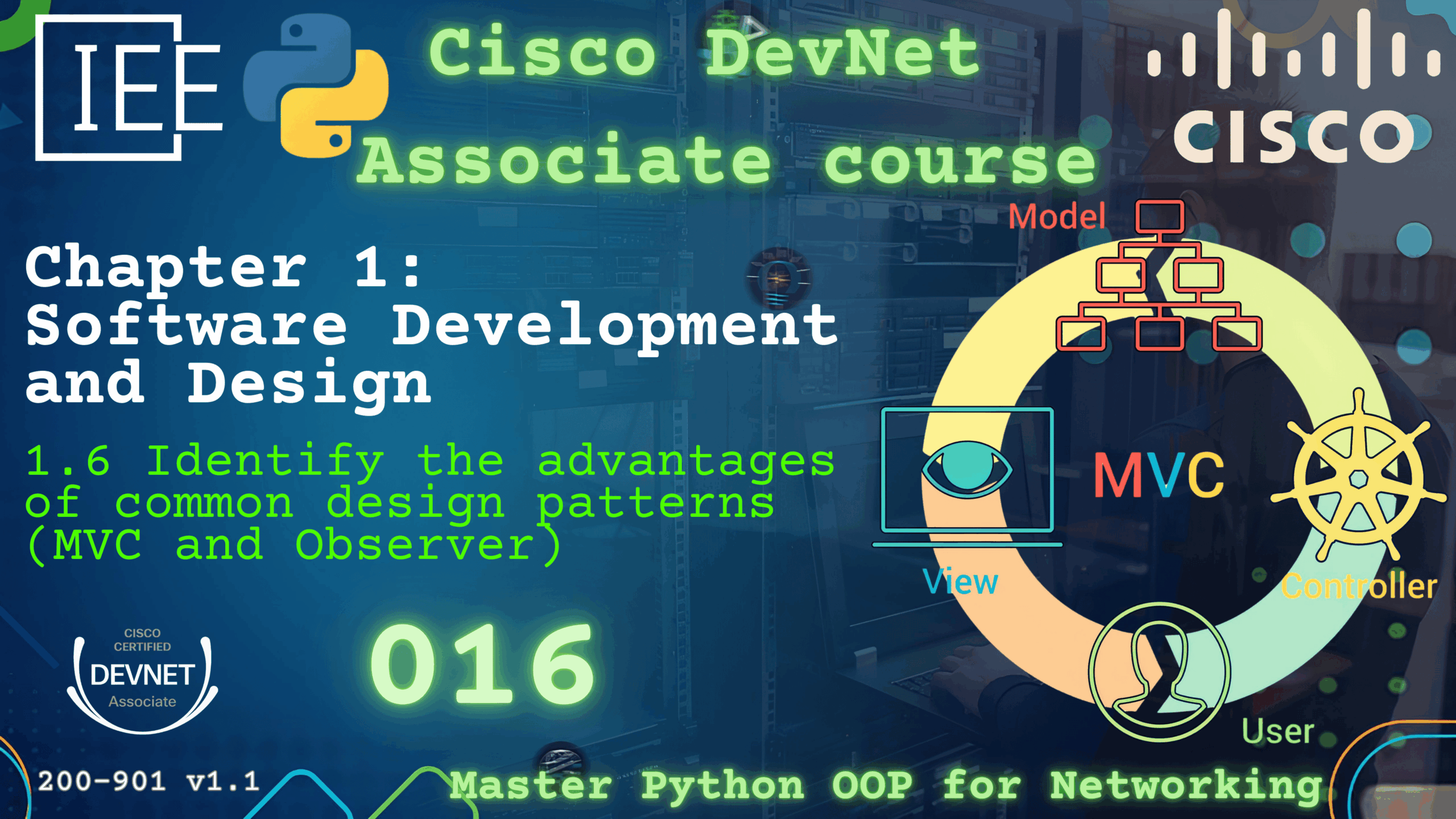Cisco DevNet Associate course 011 Software Development and Design Compare Software Development Methods – Lean
Watch Full Demo on YouTube:
Introduction:
In today’s fast-paced digital world, software development teams are constantly seeking ways to deliver high-quality products quickly and efficiently, while staying aligned with customer needs. Traditional models like Waterfall often fall short in dynamic environments where flexibility and rapid iteration are key.
Enter Lean Methodology—a lightweight, customer-centric, and waste-eliminating approach to software development. Inspired by the Toyota Production System, Lean has evolved beyond manufacturing to become a powerful philosophy in IT and software engineering. It emphasizes delivering value fast, empowering teams, improving continuously, and eliminating anything that doesn’t contribute to the end goal.
In this post, we’ll take a deep dive into Lean’s principles, lifecycle, benefits, and trade-offs—helping you determine whether this adaptive and value-driven approach is the right fit for your project.
💡 What Is Lean Methodology?
Lean Methodology is a modern software development approach derived from the principles of Lean Manufacturing, pioneered by Toyota. In software development, Lean emphasizes delivering customer value quickly, minimizing waste, and fostering a culture of continuous improvement.
Originally developed to streamline production and eliminate inefficiencies, Lean has been successfully adapted for software engineering and IT projects, especially in environments that embrace Agile and DevOps practices. In Lean Software Development, the goal isn’t just to “build software”—it’s to build the right software, at the right time, with minimal resources and waste.
📊 The 9 Core Principles of Lean Methodology
These principles serve as the foundation for Lean and help teams stay focused on value delivery, collaboration, and efficiency.
1. Elimination of Waste
Waste is any activity that does not add value to the customer. Examples in software include partially done work, extra features, unnecessary documentation, handoffs, task switching, delays, and defects. Lean aims to identify and systematically remove all such waste.
2. Customer Centric
Everything begins and ends with the customer. Lean focuses on understanding what the customer truly values and aligning the product with their needs. Frequent feedback loops help ensure you’re on the right track.
3. Fast and Frequent Delivery
Lean promotes short delivery cycles and continuous deployment to deliver value quickly and validate it through customer feedback. This also reduces time-to-market and improves adaptability.
4. Empowered and Cross-Functional Teams
Lean teams are self-organizing and include all the skills needed to design, build, test, and deploy software. Team members are encouraged to take ownership and collaborate deeply.
5. Decide Late
Also known as “delaying commitment,” this principle suggests that decisions should be made at the last responsible moment, when there is sufficient data to make an informed choice—reducing risk and rework.
6. Built-in Quality
Rather than relying on testing at the end of the development cycle, Lean promotes building quality into every step of the process. Techniques like test-driven development (TDD), code reviews, automation, and CI/CD help catch issues early.
7. Continuous Improvement
Lean teams are never static. Regular retrospectives, feedback loops, and performance metrics are used to constantly evaluate and improve processes and outcomes.
8. Visual Management
Making work visible using tools like Kanban boards or dashboards helps teams track progress, identify bottlenecks, and manage workloads effectively.
9. Flow Efficiency Flow efficiency measures how effectively value moves through the system without delays. Lean aims to increase flow efficiency by removing queues, dependencies, and interruptions.
🔄 The Lean Software Development Lifecycle
Unlike traditional models, Lean’s lifecycle emphasizes flexibility, feedback, and fast iteration. Here’s a detailed look at each phase:
1. Concept / Ideation
This phase focuses on defining the problem to solve. It includes brainstorming, user interviews, competitor research, and outlining the initial product vision. The goal is to understand the user’s pain points and identify high-value features.
2. Value Stream Mapping and Planning
Teams create a value stream map to visualize the workflow from concept to delivery. This identifies bottlenecks, redundant processes, and opportunities to improve flow. Planning is then done to prioritize features and minimize waste.
3. Build / Development
The development phase involves implementing prioritized features incrementally. Cross-functional teams build working software in small batches, focusing on delivering customer value while adhering to Lean principles.
4. Testing and Quality Assurance
Testing is integrated throughout development. Automated tests, code reviews, and quality gates ensure defects are caught early. Lean promotes testing as a shared responsibility—not just a post-development activity.
5. Deployment / Release
Software is deployed using CI/CD pipelines, ensuring frequent and reliable releases. This allows for faster feedback and validation of delivered features. Feature toggles and canary deployments are common in Lean environments.
6. Feedback and Learning
After deployment, teams collect user feedback, performance data, and incident reports. This information feeds into retrospectives and future planning cycles. Learning is continuous and helps refine both product and process.
📊 Lean vs. Waterfall: A Comparison
| Feature | Lean | Waterfall |
| Workflow | Iterative & adaptive | Linear & sequential |
| Delivery | Frequent, incremental | Big bang at end |
| Customer Involvement | Continuous feedback | Primarily upfront |
| Change Management | Welcomed and expected | Avoided after planning |
| Risk | Mitigated early | Detected late |
| Team Structure | Cross-functional | Functional silos |
📈 Advantages of Lean Methodology
- Faster Time to Market: With continuous delivery and rapid iteration, Lean helps you ship faster.
- Improved Product-Market Fit: Frequent customer feedback ensures you’re building what users want.
- Reduced Waste: Lean helps teams focus on value, eliminating unnecessary features and delays.
- Higher Team Morale: Empowered teams that take ownership tend to be more engaged and productive.
- Greater Agility: Lean thrives in fast-changing environments where requirements evolve.
⛔️ Disadvantages of Lean Methodology
- Requires a Culture Shift: Teams must embrace transparency, ownership, and continuous learning.
- Not Ideal for Fixed-Requirement Projects: If scope, time, and budget are strictly fixed, Lean’s flexibility might be a drawback.
- Difficult in Regulated Industries: Compliance-heavy environments may struggle with Lean’s informal documentation style.
- Needs Strong Leadership: Without effective facilitation, Lean can devolve into chaos.
📃 Final Thoughts: Is Lean Right for You?
Lean Methodology is ideal for projects that demand flexibility, speed, and user-focused development. It excels in dynamic, feedback-driven environments—especially when uncertainty is high, and experimentation is encouraged. However, it’s not a silver bullet. Organizations must assess their culture, project type, and stakeholder expectations before committing to Lean.
📖 Further Reading
🧾 Conclusion
Lean Methodology is not just a development framework—it’s a mindset. One that prioritizes value, empowers people, and thrives on feedback and evolution. When adopted properly, Lean helps organizations respond quickly to change, reduce costs, and deliver better products that truly meet user needs.
However, adopting Lean requires commitment—a shift in culture, structure, and daily operations. It’s best suited for environments that embrace agility, transparency, and continuous learning. If you’re launching a new product, dealing with evolving requirements, or operating in a highly competitive market, Lean could be the game-changing approach your team needs.
Whether you’re part of a startup or an enterprise IT team, understanding and leveraging the Lean methodology can unlock powerful results—faster, smarter, and with greater alignment to customer goals.
References:
Cisco Certified DevNet Expert (v1.0) Equipment and Software List



